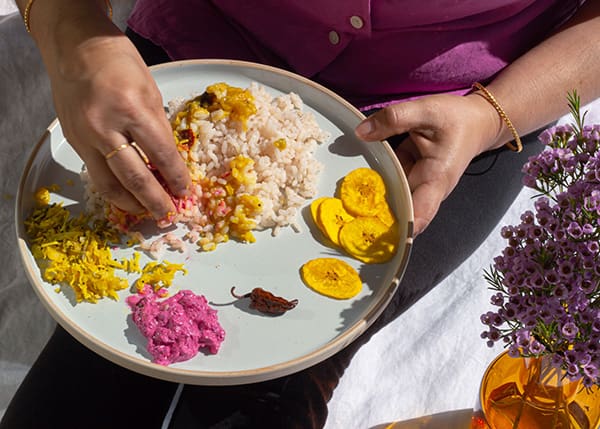Paiye thinnal, panayaum thinnam.
This Malayalam idiom was one frequently said to me by my mother when I was younger, often when I would be downing a meal at a rate usually reserved for fast-food. It roughly translates to “if you eat slowly, you can eat a palm tree.” While this idiom isn’t ordinarily used in the case of eating or even food – rather, in a context similar to “slow and steady wins the race” – food and eating seeps into every aspect of growing up Indian. Turmeric fluorescence, dollops of creamed coconut, and the indulgent inhalation of freshly fried mustard seeds in an explosive pool of ghee are all common features of a South Indian household – if the smell doesn’t make you salivate, you need only to take a few more steps forward.
The cuisines of Kerala, Tamil Nadu, Karnataka, and other regions of South India are known for its tight preservation of ancient delicacies, undoubtedly due to its peninsular location. However, for every traditional dish, I feel as though I could list an equal interaction that has made me roll my eyes at the Western standard held for the execution of Indian cuisine, and vice versa. On one occasion (during a bizarre retelling of how once, as a child, I nearly ate a cockroach shell thinking it was fried fish), someone cleared their throat to point out that if a fish is that brown, it is simply burnt – missed the point, if you ask me. In second year, I arrived at my lecture theatre half-an-hour early and took a seat at the back, far from the persecuting noses of two other students to eat a delicious lunch of ghee rice and coconut fish curry, only to be documented on the Instagram story of a student who felt it was their duty to share the mysterious stench gripping their nostrils with their barely-existent followers. Other common questions include, “Why does your pizza taste Indian?” and “Do you eat with the same hand you wipe with?”
There are, however, things that should be recognised about South Asian cuisine that often go unnoticed, or are unfortunately homogenised in the single presumptive and virtue signalling phrase: “Oh! I had a fantastic butter chicken last weekend!” During a brief period of homesickness last year, my mum attempted to guide me through the process of making a staple chicken curry over a FaceTime call. “Add a bit of turmeric, and maybe a bit of the fenugreek…” she said. If it weren’t for the fact she forgot to tell me – or maybe it is common sense to know – to add the potatoes, perhaps the curry would have been a success. Recipes are one of the best examples of Indian oral tradition, one that rejects the rigidity of jotting down tablespoons and cup measurements, rather, taking an ‘a bit of this, and a bit of that’ approach, where salting is an implication not worth the inclusion of “salt to taste.” Indian cooking has always felt like a system of mass-feeding and hospitality, cemented in the instinct to bring out platters spilling with snacks at a gathering of any size. Maybe this can be observed in that if you were to ask me for the name of a famous Keralan chef, I’d correct you to say ‘caterer’.
The notion that food only exists for physical nourishment is a severe misunderstanding of an entire love language. I’m reminded of this when flicking through pages of near-identical, staged cake-feeding photos from past birthdays, or when my mother overfeeds my boyfriend when he’s too polite to decline. In 2019, when my grandfather passed away, my entire family was vegetarian for weeks. My grandmother would make pots of kanji and payar – rice soup with mung beans – accompanied by whatever achar we had at the time, or lentil soups like sambar and rasam to drench our rice. Indian food lives and breathes through waves of grief and celebration; the nucleus of a household in a way so maternal, and so humble that is frequently taken for granted.





